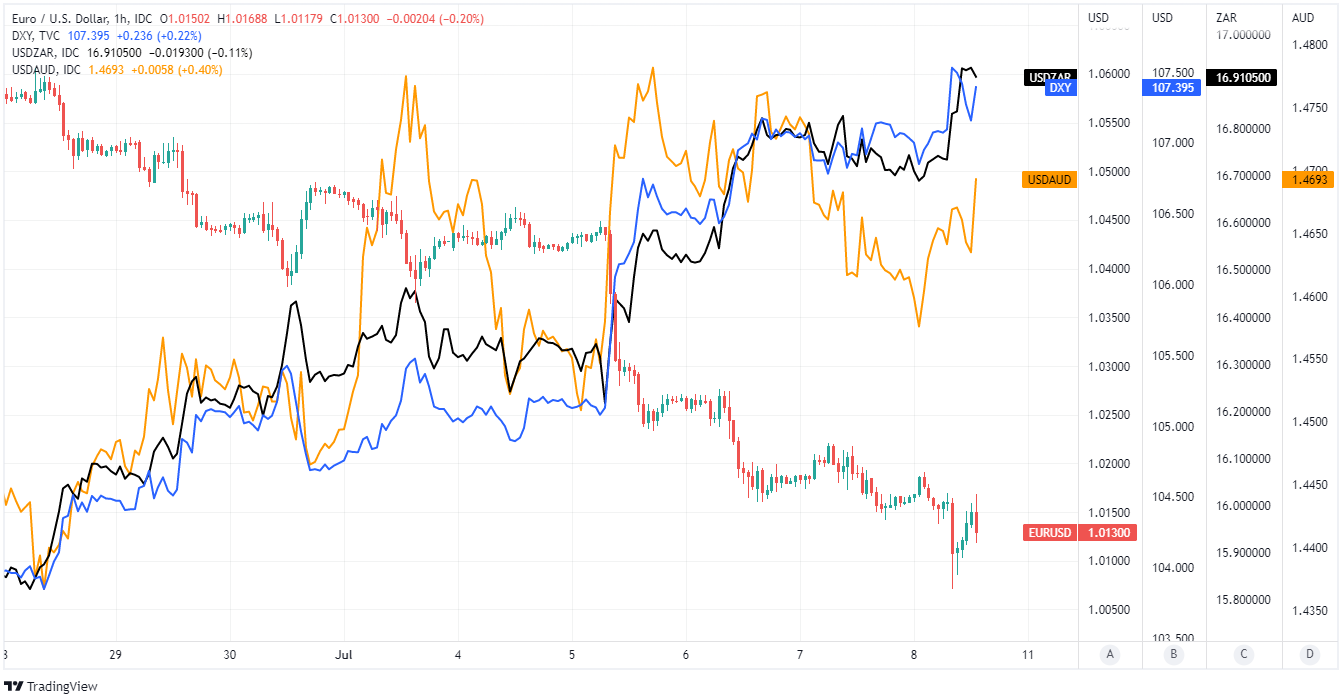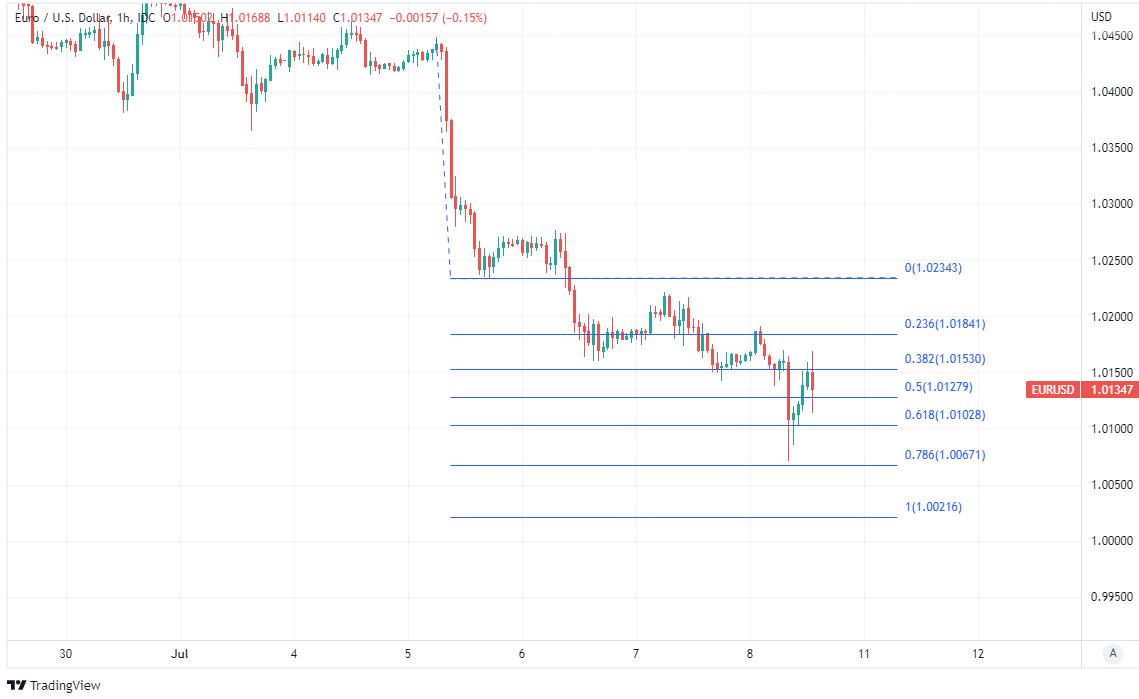Euro-Dollar Struggles Near Parity as USD Follows Payrolls Higher
- Written by: James Skinner
-

Image © Adobe Images
The Euro narrowly avoided a brush with the psychologically significant level of parity against the Dollar in the final session of the week but was last seen struggling to fend off an advancing greenback after U.S. non-farm payrolls figures surprised on the upside of market expectations for June.
U.S. non-farm payrolls rallied last month when some 372k jobs were either created by the economy or simply recovered from the damage induced by earlier coronavirus containment efforts, which was far in excess of the roughly 260k increase indicated by measures of consensus among economists.
Meanwhile, the unemployment rate held steady at 3.6% in June, keeping it close to the multi-decade lows prevailing ahead of the pandemic.
“The unemployment rate was 3.6 percent for the fourth month in a row, and the number of unemployed persons was essentially unchanged at 5.9 million in June. These measures are little different from their values in February 2020 (3.5 percent and 5.7 million, respectively), prior to the coronavirus (COVID-19) pandemic,” the Bureau of Labor Statistics said.
“Total nonfarm employment is down by 524,000, or 0.3 percent, from its pre-pandemic level in February 2020,” the Bureau did add, however.
 Above: Euro to Dollar rate shown at hourly intervals and alongside U.S. Dollar Index, USD/ZAR and USD/AUD.
Above: Euro to Dollar rate shown at hourly intervals and alongside U.S. Dollar Index, USD/ZAR and USD/AUD.
Average hourly earnings growth came in at 0.3% last month and 5.1% for the year to the end of June, which is potentially important for the Federal Reserve (Fed) outlook and reflects declines from 0.4% and 5.3% respectively.
Wage growth has not matched the pace of inflation in the U.S., which was in excess of 8% on one measure for the month of May, but it has been running at higher than usual levels and central banks would typically interpret this as feed for inflation and an invitation to raise interest rates.
“An upward revision to the prior month left the annual pace of growth a tick above expectations at 5.1%. Overall, the continued strong hiring in the payrolls survey supports a likely 75bp hike by the Fed later this month,” says Katherine Judge, an economist at CIBC Capital Markets.
The market has largely already priced-in the risk of the Fed Funds rate rising by another 0.75% increment, to 2.5%, this month but that didn’t stop the Dollar from rising or the Euro from falling in the wake of Friday’s data.
One possible interpretation of Friday’s data and the Dollar’s response to it is that the post-pandemic job market is in rude health and so likely only adds to the lingering upside risks to the Federal Reserve interest rate outlook.
 Above: Euro to Dollar rate shown at hourly intervals with Fibonacci extensions of Tuesday slide indicating prospective short-term pivot points for the single currency. Click image for closer inspection.
Above: Euro to Dollar rate shown at hourly intervals with Fibonacci extensions of Tuesday slide indicating prospective short-term pivot points for the single currency. Click image for closer inspection.
This is after minutes from the June monetary policy meeting explicitly “recognized the possibility that an even more restrictive stance could be appropriate if elevated inflation pressures were to persist,” on Wednesday.
There was broad support on the Federal Open Market Committee in June for lifting U.S. interest rates to a “modestly restrictive” level of somewhere between 3% and 3.5% by year-end but Fed officials have since then made clear that they would be prepared to go even further than this.
“At the current juncture, with inflation remaining well above the Committee’s objective, participants remarked that moving to a restrictive stance of policy was required to meet the Committee’s legislative mandate to promote maximum employment and price stability. In addition, such a stance would be appropriate from a risk management perspective because it would put the Committee in a better position to implement more restrictive policy if inflation came in higher than expected,” Wednesday’s FOMC minutes stated in part.
Any further upward revision by the market to expectations for U.S. interest rates could do little other than amplify recent analyst and economist concerns about the risk of a recession in the U.S. and global economy, a risk that many have recently billed as being on the rise.
This could do no favours for a recently collapsed Euro to Dollar rate that was left struggling near to the parity marker on Friday.











